Written By Rich Jiang On 6th November 2022
Display technology development so far, from CRT, PDP, LCD, and then OLED, laser, can be said to our daily life has brought sweeping changes, then the next generation of the future of display will be what?
Today, we will talk to you about those "future display" that you are already familiar with or have not heard of, perhaps they are not far from our lives.
OLED
OLED technology has been considered a candidate for the next generation of display technology since it was born in Kodak Labs in 1979. Nowadays, high-end cell phones have been equipped with OLED screens as standard, and in the field of large-screen TVs, OLED TVs have gradually become synonymous with high-end TVs.
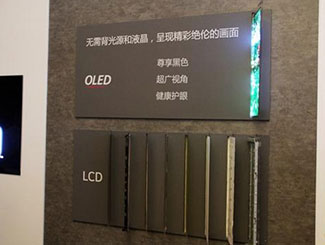
OLED is organic light-emitting diode, its characteristics are self-emitting, unlike TFT LCD needs backlight, so visibility and brightness are high, followed by low voltage requirements and high power efficiency, coupled with fast response, light weight, thin, simple structure, flexible display and other characteristics.
Mini LED
Mini LED is essentially a miniaturized LED system, and what we often see outdoors is a large LED screen with a large pitch, which is called Mini LED because the pitch is small enough. monitor with 0.7mm pixel pitch, and this 27-inch monitor may apply tens of thousands of Mini LED modules, so it can be better dimming, whether it is used in professional display field or gaming field, it can effectively improve the color gamut performance.
Due to the characteristics of Mini LED, this 1 display are easily expandable to 100 inches or even 150 inches or more.
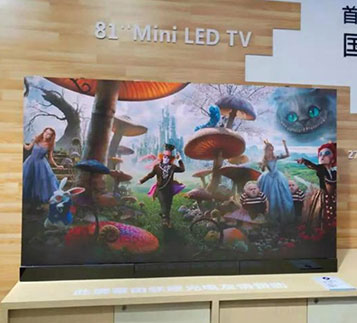
Mini LED backlight is actually an upgrade of the LED backlight, the original LED strip is just one, the use of light guide plate to achieve brightness spread, while Mini LED backlight is the use of a very large number of ultra-small size LED light group to achieve the backlight effect. In this way, Mini LED backlight not only can be more detailed dimming zoning (Local Dimming Zones) to achieve high dynamic range (HDR) to present high contrast effects, but also to shorten the optical distance (OD) to reduce the overall thickness of the machine to achieve thin demand.
Micro LED
Compared to Mini LED, Micro LED has a very similar name, but the substance represented is different. Micro LED is currently strongly promoted by Samsung, which is also known as one of the next-generation display technology overlords.
Mini LED refers to the grain size of about 100 microns or more LED, while Micro LED is LED miniaturization and matrix technology, in a single word, is the LED backlight for thin film, tiny, array, can make the LED unit less than 100 microns, and OLED as able to achieve each figure element individually addressed, individually driven light (self-luminous).
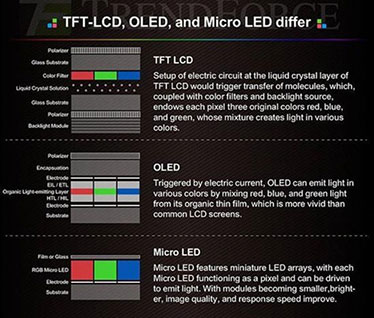
Micro LEDs have the advantage of inheriting the advantages of both the micro LEDs and the micro LEDs.
The advantage of Micro LED is that it inherits the high efficiency, high brightness, high reliability and fast response time of OLED, but also has the characteristics of self-luminous without backlight, small size, thin and light, and can easily achieve the effect of energy saving.
Micro LED although simpler in structure, but its biggest problem is the well-known huge amount of transfer, how to make the LED tiny, need wafer-level technology level. For example, a 4K level Micro LED screen requires more than 24.88 million highly integrated LEDs, and the current technology is clearly not mature enough.
Electroluminescent Quantum Dot QLED
QLED is the abbreviation of Quantum Dot Light Emitting Diodes, referring to the quantum dot light-emitting diodes, most of the current market is advertised as photonic quantum dot TV (QD-LCD), the real electroluminescent quantum dots (QLED) and OLED has the same characteristics of self-emitting, no additional light source, light-emitting principle and structure is more The light-emitting principle and structure are simpler and have a similar principle to OLED in terms of display method.
The light-emitting principle and structure are simpler and similar to OLED in terms of display method.
At UDE 2019, Najing exhibited for the first time a 4-inch color quantum dot electroluminescent display with 320×240 resolution, 100ppi pixel density and 108% color gamut (NTSC), made with IGZO backplane and printing process.
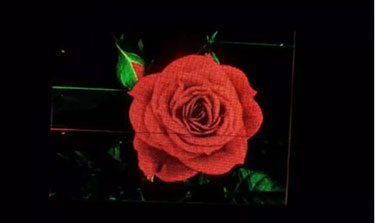
QLED is electrically driven so that the quantum dots themselves emit light and produce images through color mixing, eliminating the need for liquid crystal, thin film and other modules, while completely eliminating the need for backlight units. In the future, QLED can also achieve printed display, flexible display, can be printed to the same newspaper manufacturing display, of course, the time may need to be a little more.
To this end, the industry has made some optical quantum dot improvements, for example, Huaxing photoelectric newly launched a 65-inch quantum dot display with QD POL as the core technology, breaking the bottleneck of quantum dot polarizer optical technology. The use of quantum dot polarizer replaces the traditional TFT side polarizer, allowing the Q-Cell display color gamut to be increased to NTSC 100% and the viewing angle to be expanded to 135 degrees.
Stacked Screen TV
On July 8, 2019, Hisense released the world's first stacked-screen TV, which is considered the most cost-effective and mature top display technology solution available.
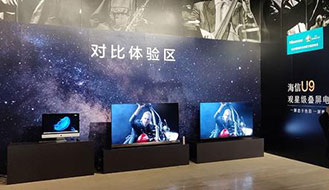
Stacked screen TV is a stacked display solution composed of two LCD panels, one side of the color control, one side of the dimming, to achieve contrast, color scale and perspective of the three breakthroughs, and ultimately achieve 1 + 1 > 2 effect, according to the director of the China Electronics Institute of Audio and Video National Inspection Center Dong Gui Guan at the launch site announced the authoritative test data show that Hisense stacked screen TV U9E contrast ratio of 150,000: 1, this core picture quality Indicators far more than ordinary LCD TVs, even OLED.
Of course, the stacked screen TV is more like all the above future display technology is not mature before the optimal choice, after all, it is still a LCD TV.
Holographic TV
If the above represents more of the home field, then holographic projection is a more shocking commercial field of the future display, and in many large stage has been applied.
Holographic technology is actually the realization of real three-dimensional image recording and reproduction, the most commonly used light source is from the projector, because for one thing, the light source brightness is relatively stable, and secondly, the projector also has the role of amplifying the image, as a holographic display is very practical.
Holographic projection technology breaks through the traditional sound, light, electricity limitations, space imaging vivid colors, contrast, clarity are very high, the sense of space, perspective is very strong. It can not only produce three-dimensional aerial illusions, but also make the illusions interact with the performers and complete the performance together, producing a shocking performance effect.
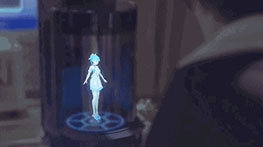
Of course, there are "Wild" display companies are eyeball holographic display, the goal is to allow viewers to watch the goalkeeper "beside" the exciting penalty kick, rather than lying on the couch.
Previously rumored that the Japan Broadcasting Corporation (NHK) is determined to launch the first Holo-TV before 2020, Holo-TV broadcast each game will be filmed by 200 high-definition cameras 360 degrees, and then broadcast in 3D video, microphones will be installed under the stadium to record all the sounds, including the sound of players playing football and the referee's whistle. Used to create a surreal version of the digital sound.
Of course, what we see now is not the future of all, we also look forward to more explosive display technology to change our lives, which display technology do you think is more representative of the future?
This is the time to bring your projects to the next level and truly create an impact with a display that is not going to be missed. The digital signage displays are now in stock so GET IN TOUCH TODAY to reserve yours and avoid disappointment!
 Rich Jiang
Rich Jiang
Rich Jiang is the Marketing Director at CY Digital Signage. And he has over 15 years experiences in digital signage displays.
